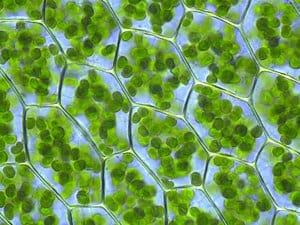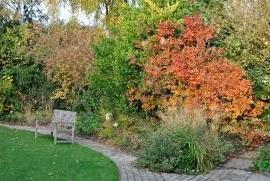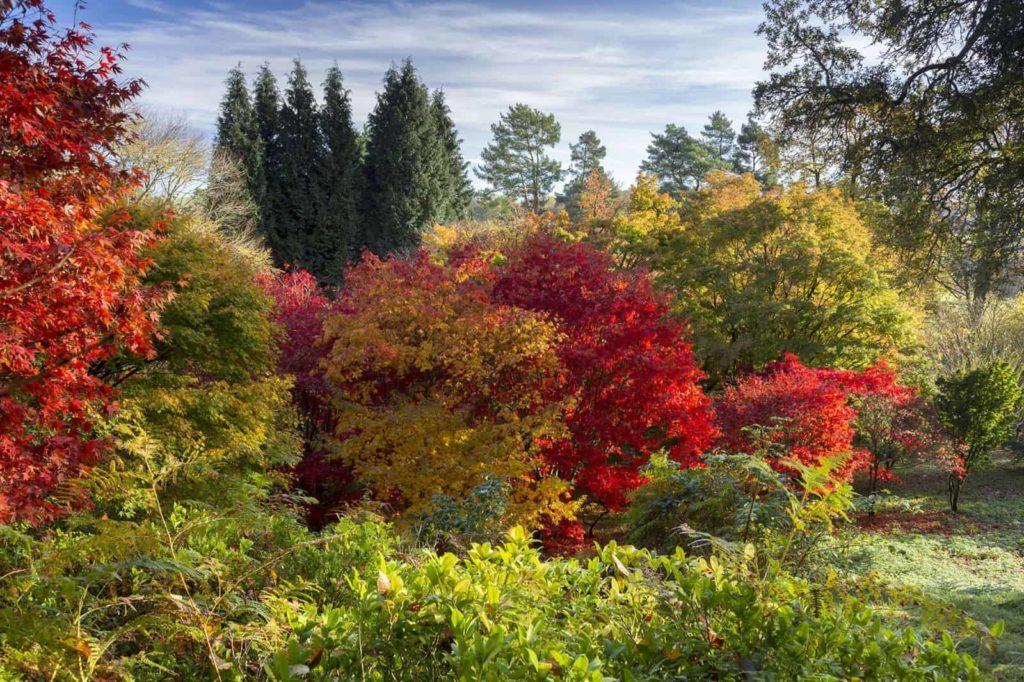Despite what you might think, leaves don’t change colour and fall off just so you have an extra chore in the fall. The changes in the amount of sunlight, due to both shorter days and a lower sun, combined with colder temperatures to tell the trees that it’s time to go dormant. As they begin their long winter’s nap, one of the first things to slow down is the chlorophyll-making process that gives leaves their green colour. But there’s a lot more science to this story!
Chlorophyll and Leaf Colour
Trees create their own food using a chemical process known as photosynthesis. If you’ve ever seen The Magic  School Bus, you’ll probably know how it works, but for those who haven’t: water and carbon dioxide are sucked up into the tree, and energy from sunlight is used convert them into glucose. Oxygen is the waste product of this process, and we use that to breathe, so the whole process is a win for everyone!
School Bus, you’ll probably know how it works, but for those who haven’t: water and carbon dioxide are sucked up into the tree, and energy from sunlight is used convert them into glucose. Oxygen is the waste product of this process, and we use that to breathe, so the whole process is a win for everyone!
But why do most tree leaves look green? This is due to chlorophyll, the thing trees use to convert sunlight into energy. This chlorophyll, found in special plant cell compartments called “chloroplasts”, absorbs specific wavelengths of light that help it perform photosynthesis to make simple sugars the tree will use for food. These wavelengths would appear to our eyes as blue and red, but since they are absorbed, the light that the chlorophyll does not take in appears to us as green. What you’re seeing then is the light the tree doesn’t need!
From Green to Yellow to Red: Why Leaves Change Colour
When the tree prepares itself for its winter rest, it has enough sugar stored so it doesn’t require food production anymore. It stops producing chlorophyll in its chloroplasts, and as this slows down, leaves will turn to a bright yellow as another pigment, carotenoids, become the main chemical in the leaves. Carotenoids are found in the chloroplasts anyway, but can’t be seen until the chlorophyll stops being made. When fall comes, it’s their time to shine – but only for a moment.
 As the days get shorter and the temperatures get lower, the tree’s next step before winter is shedding its leaves. The leaves fall when the tree form a layer of cells at the leaf base, cutting off the sugars from going into the body of the tree. The red colour is caused by the sugars reacting to this cell layer, creating a pigment called anthocyanin. It’s the same pigment that makes apples red, grapes purple, and blueberries “blue”. When you see orange leaves, this is the anthocyanin mixing with the leftover carotenoids.
As the days get shorter and the temperatures get lower, the tree’s next step before winter is shedding its leaves. The leaves fall when the tree form a layer of cells at the leaf base, cutting off the sugars from going into the body of the tree. The red colour is caused by the sugars reacting to this cell layer, creating a pigment called anthocyanin. It’s the same pigment that makes apples red, grapes purple, and blueberries “blue”. When you see orange leaves, this is the anthocyanin mixing with the leftover carotenoids.
The whole topic might make your head hurt, and that’s okay! Just know that a healthy tree changes colour as the seasons change; it’s how the tree protects itself during the winter, and it should return to its full, green self come spring. If your leaves are changing too soon, this is usually a sign that the tree is going through something stressful, and is trying to protect itself by going dormant. If this is the case, call an arborist! Colour is a great indication of tree health, but luckily, it’s one of the easiest signs to notice.

